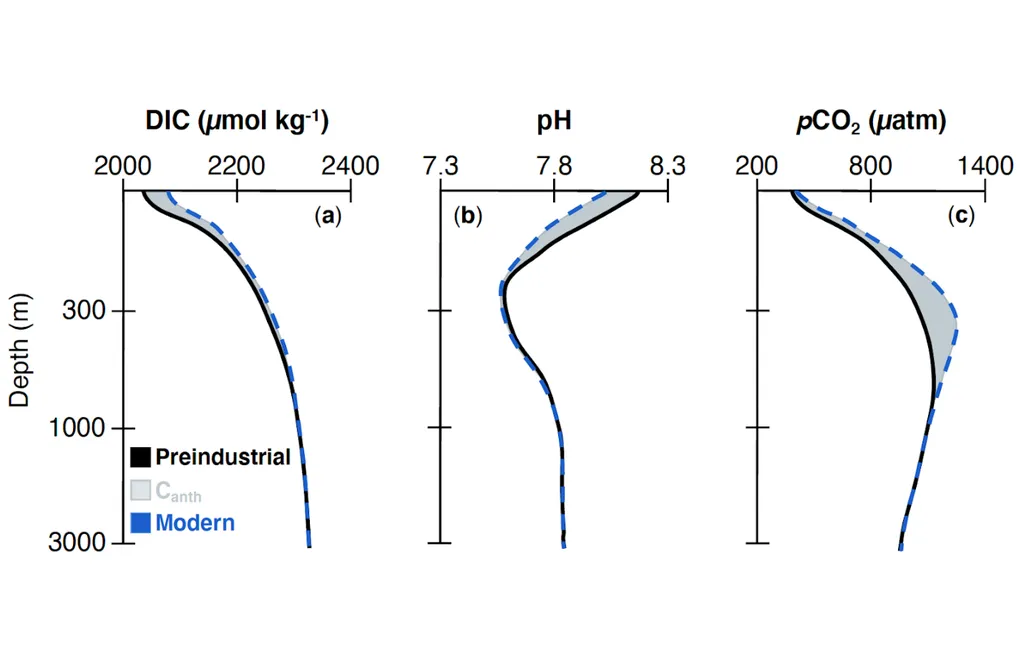In the vast, ever-changing expanse of the world’s oceans, a new study is making waves by shedding light on the intricate dance of surface water pH levels. Led by L. Delaigue from the Department of Ocean Systems at the NIOZ Royal Netherlands Institute for Sea Research, this research is challenging our understanding of ocean acidification and its implications for air-sea CO2 exchange. The study, published in the journal ‘Life Sciences in Space Research’, is a beacon for those seeking to comprehend the nuanced interplay between biological activity, temperature, and the ocean’s capacity to absorb carbon dioxide.
The research team developed a novel optical system for continuous, high-resolution surface seawater pH measurements. This system, which includes a PyroScience pH optode placed in a flow-through cell, allows for measurements at a rate of 2 to 4 per minute. This high-frequency data collection was employed during two research cruises in the North Atlantic and South Pacific oceans, revealing fine-scale fluctuations in surface seawater pH.
“While temperature is a significant factor driving these variations, it doesn’t account for all observed changes,” Delaigue explained. “Our results highlight the interplay between temperature, biological activity, and waters with distinct temperature-salinity properties and their impact on pH.”
The study found that the variability in pH differed between the two regions, suggesting differences in the dominant factors influencing pH. In the South Pacific, biological processes appeared to be mostly responsible for pH variability, while in the North Atlantic, additional abiotic and biotic factors complicated the correlation between expected and observed pH changes.
So, what does this mean for the energy sector and our understanding of ocean acidification? The findings indicate that broader ocean-basin-scale analyses based on lower-resolution datasets can effectively capture surface ocean CO2 variability at a global scale. However, they also highlight the necessity of fine-scale observations for resolving regional processes and their drivers. This is essential for improving predictive models of ocean acidification and air-sea CO2 exchange, which in turn can inform policy and industry practices.
As we grapple with the challenges of climate change and the energy transition, understanding the intricate dynamics of our oceans is more crucial than ever. This research not only advances our scientific knowledge but also underscores the importance of high-resolution data in shaping future developments in the field. As Delaigue puts it, “This is not just about understanding the past and present, but also about predicting and preparing for the future.”
In the grand scheme of things, this study is a stepping stone towards a more comprehensive understanding of our oceans and their role in the global carbon cycle. It’s a testament to the power of innovative technology and the importance of high-quality data in driving scientific progress. As we continue to explore and understand our planet, studies like this one will be instrumental in guiding our efforts to mitigate the impacts of climate change and transition to a more sustainable energy future.

